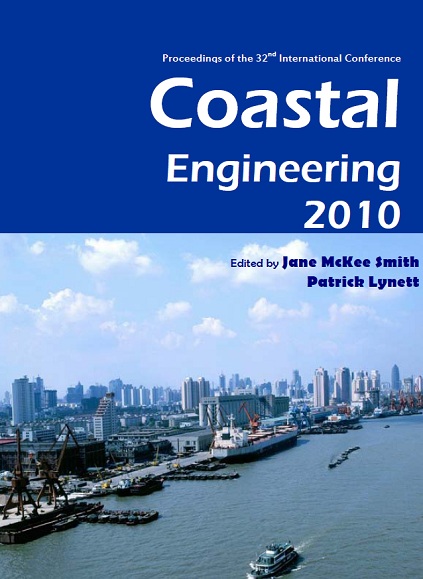Abstract
The beach fill was constructed using an innovative feeder beach design, rather than a standard linear fill template. The feeder beach design was adopted to address the concerns of local surfing groups by initially burying fewer structures, and by potentially creating additional surfing opportunities through enhanced bar formation during the equilibration process. Nine months of monitoring results show that roughly 84% of the placed material can be accounted for within the project area and on the downdrift beaches. The immediate impact of the fill on the local surfing conditions was negative within the project area as steep slopes, violent plunging breakers, and narrow surfzones limited the use of the feeder beach area; however traditional surf spots to the north and south were unaffected by the nourishment due to the concentrated nature of its placement. More recently, as the post-nourishment slopes have begun to equilibrate, surfing conditions have improved markedly within the project area, while the up drift and down drift beaches remain relatively unaffected.References
Battjes, J.A. 1974. "Surf Similarity." Proc. 14th Int. Conf. Coastal Eng., 466-479.
Benedet, L., T. Pierro and M. Henriquez, 2007. "Impacts of coastal engineering projects on the surfability of sandy beaches." Shore and Beach, 75(4), 3-20.
Coastal Research Center, The Richard Stockton College of New Jersey. 2009. "New Jersey Beach Profile Network." < http://intraweb.stockton.edu/eyos/page.cfm?siteID=149&pageID=1>
Dally, William R. and Daniel A. Osiecki, 2007. "Sculpting beach nourishment to improve surfing." Shore and Beach, 75(4), 38-42.
Dean, Robert G., 1977. Equilibrium Profiles US Atlantic and Gulf Coasts. Department of Civil Engineering, Ocean Engineering Report No. 12, University of Delaware.
Earle, Marshal D., David McGehee and Michael Tubman, 1995. "Field Wave Gaging Program, Wave Data Analysis Standard." Instruction Report, US Army Corps of Engineers.
Miller, J.K., A.M Mahon and T.O. Herrington, 2009. "Development of the Stevens Dynamic Underwater Coastal Surveying (DUCKS) System." Davidson Laboratory Technical Report, Coastal Protection Techanical Assistance Service.
Miller, J.K., A.M Mahon and T.O. Herrington, 2009. "Long Branch Alternative Fill Placement Monitoring Report 1: February 9, 2009 to May 12, 2009." Davidson Laboratory Technical Report, Coastal Protection Techanical Assistance Service.
Miller, J.K., and T.O. Herrington, 2008. "Long Branch Alternate Fill Placement Monitoring Plan, Long Branch, New Jersey" Davidson Laboratory Technical Report, Coastal Protection Techanical Assistance Service.
New York District of the US Army Corps of Engineers. 1984. "Atlantic Coast of New Jersey Sand Hook to Barnegat Inlet with Emphasis on Sea Bright to Monmouth Beach." US Army Corps of Engineers, 73 pp.
Walker, J.R. Recreational Surf Parameters. Technical Report 30. Honolulu: University of Hawaii, Department of Ocean Engineering, 1974.

